When most people talk about cannabis these days, they’re generally speaking of marijuana or the personal consumption of cannabis products that you might find at a dispensary. A burgeoning hemp industry for clothing, textiles, and other personal products is also gaining popularity. However, for much of history, cannabis functioned as much more than just a way to get high or relax. It’s been instrumental for civilizations all over the world for centuries.
Today, we’re witnessing the global rebirth of cannabis usage and utilization after decades of prohibition. But before we get started, let’s dispel a popular myth regarding these two terms. One of the biggest untruths is that hemp is male, while marijuana is female. Hemp can be either male or female, like most cannabis species.
It is rather the manner of cultivation and THC content that distinguishes hemp from marijuana. Males are cultivated shortly after pollination, while female plants are grown until full maturity and harvested at the end of the season. Any cannabis with 0.3 percent THC content or under is considered hemp. So don’t worry, you won’t be getting a buzz from hemp.
Here we’ll detail the historical development of the cannabis plant, and explain how it got to be the way it is today.
The Cannabis Plant
History of Cannabis
Around 4000 years ago, a big genetic split occurred among cannabis plants. This was the split of cannabis plants into what we today would call “hemp” and “marijuana”. Of course, these terms were not used back then, but instead, categories formed based on the uses of the fibers. Cultivators realized that certain fibers would be excellent in making goods and construction materials, while others would be better ingested for medicinal or spiritual purposes.
Hemp Plants
Let’s begin with hemp, the non-psychoactive side of cannabis plants.
History of Hemp
Hemp, (Cannabis Sativa) is also known as industrial hemp because of its uses. Hemp originated in Central Asia over 9000 years ago, so it is not a new phenomenon by any means. Traces of human agriculture usually start around 10,000 years ago, so hemp is believed to be one of the first crops ever cultivated by humans.
Cannabis on the Silk Road
Thanks to the Silk Road, hemp eventually made its way to the Middle East and was traded for centuries in the Mediterranean region. Cannabis had many uses in ancient China. Documents detail heavy usage of cannabis for ropes, nets, textiles, and other manufactured goods. The hemp seeds of cannabis were a major food crop before other more dominant ones took over.
Its oil was used abundantly for cooking, and its stems and roots were used for both medicinal and psychoactive purposes. Instead of the joints and bowls, you see today, the ancient users of cannabis generally elected to burn cannabis much like incense, filling up a small room with the smoke, and inhaling over the course of several hours.
Cannabis Comes to America
After the Columbian exchange, hemp cultivation was brought to South and Central America, favoring mountainous regions like the Andes. Hemp even became a valuable crop during the early formation of the North American colonies, including at Jamestown, the first permanent English settlement. Many of the founding fathers, including George Washington, famously grew hemp on his plantations. The importance of hemp throughout the centuries cannot be overstated. Its uses varied from clothes, rope, shoes, bags, paper, and other textiles.
Just how prolific is hemp? Even 100 years ago the USDA determined that hemp was four times as efficient as producing paper than trees. Talk about a sustainable resource.
Prohibition and War Effort
After the Marijuana Tax act of 1937, the use of hemp as an agricultural commodity began to dramatically decline. Critics point to the growth of the plastics and nylon industries as a means of explaining this dramatic tax on hemp. Once these synthetic materials took over, industrial production of cannabis went by the wayside.
The USA later reversed its stance on hemp due to its usefulness during the war effort in the 40s. Politicians created a campaign called “Hemp for Victory” to encourage farmers in the South and California to allocate more of their land to hemp production. Growing hemp quickly went from a rarity to a booming industry once again.
Finally, on the eve of the War on Drugs in 1970, alongside the advent of the Drug Enforcement Administration, hemp was abruptly regulated as a Schedule 1 drug by federal agencies, classifying it along with drugs like LSD and Heroin.
Uses Today
The 21st century has brought some more relaxed attitudes towards hemp, especially as medicine and dietary supplements. The use of hemp today is greatly instrumental in the production of CBD, a non-psychoactive compound that comes from hemp. Using hemp fibers, it’s possible to produce hemp milk, hemp seed milk, hemp oil, hemp seed oil, and many more hemp products.
It’s become so popular in fact, that consumers drove hemp-derived CBD profits over $1 Billion in 2019. Other products derived from hemp include skincare, accessories, and clothing. To put it simply, when you think of hemp, think of lower levels of THC content, and more applications that don’t have to do with psychoactive effects. CBD products have also been introduced in a range of industries like pet food products and medicine as well as other pharmaceutical niches. Medical purposes will continue to be abundant, especially with tremors or shakes like in conditions such as multiple sclerosis.
For other countries, the legality has been floated around for years, but as for America, legalization of hemp is now ultimately up to the discretion of state governments. Thanks to the 2018 farm bill, funding to increase hemp production and support hemp farmers were implemented. This includes tribal participation as well, which will hopefully allow sovereign tribes to cultivate industrial hemp plants too.
In addition, hemp seems to be good for the planet too. One hectare of hemp plants can suck up around 15 tons of carbon dioxide. In addition, its deep roots can prevent soil erosion and improve soil health. Hemp crops may even promote more biodiversity among certain habitats, especially since it’s a fast-growing crop, meaning plant material grows and decomposes faster than trees.
– Is Hemp Milk derived from the same plant as Marijuana?
Yes, hemp milk is derived from the same plant as marijuana. However, hemp milk does not contain THC, the psychoactive compound found in marijuana. It is a nutritious alternative to dairy milk, offering various hemp milk benefits such as being rich in omega-3 fatty acids and providing essential nutrients.
Marijuana Plants
Marijuana is the psychoactive side of cannabis.
History of Marijuana
The term “marijuana” has a complicated past. For many years, the crop was described as “cannabis”, which typically held a somewhat neutral connotation. In the 1910’s, immigration from Mexico surged due to revolutionary unrest and violence. Between this explosion of new migrants at the border and the increasing nationalist sentiments bubbling over from Europe, immigration became an easy way to stoke fear and induce hysteria.
Reefer Madness
Journalists explain that politicians used the word “marijuana” to associate the once-popular cannabis with Mexican immigrants. They made inflammatory claims that Mexicans’ ‘excessive’ use of marijuana would result in “Reefer Madness”, pinning crime, drugs, and misconduct on these new migrants, whether or not they were criminals. Other articles associated marijuana with African Americans, jazz musicians, and poor whites. Experts say this discrimination and stereotyping followed for decades.
Uses Today
Increased Potency
Over the years, cultivators have been on a mission to create strains with more THC. Anecdotal evidence almost always points to this phenomenon. Just ask your parents. Or in some cases, ask friends or family who live in a non-legal state. Consumers of cannabis in non-legal states often claim that marijuana potency drops off in the process of shipping, which makes sense. The farther the export has to go, the more the quality is decreased. Overall, marijuana today as it relates to 30 years ago, contains much higher concentrations of THC. The long-term effects of this increased potency are still being researched today through peer-reviewed studies.
Legality
Today, marijuana has more potential for recreation and health benefits than ever before. Medical marijuana is currently legal in 37 states as well as most U.S. territories. Recreationally, however, it’s legal in 18 states as well as D.C. and Guam.
Yet while many states enjoy legal cannabis consumption, the effects of the War on Drugs still are being felt. According to the ACLU, over half of drug arrests in the United States are for marijuana. The data also shows a massive racial discrepancy: while usage rates among whites and blacks are roughly the same, Black people are almost 4 times as likely to be arrested for possession of marijuana. And that’s just the federal rate. For states like Iowa, Minnesota, and Illinois, that rate jumps up to 7 or 8 in some cases.
These arrests can have devastating personal consequences like job loss, loss of public benefits or unemployment, and voter disenfranchisement. On a macro level, these arrests have also led to an explosion in the United States’ prison system as well as the rapid growth of industries surrounding incarceration.
Movements for federally legal marijuana aim to resolve these discrepancies and expunge records in certain cases so that citizens can move on from these convictions. All of this comes at a time when a majority of Americans support marijuana legalization, and would rather see resources and efforts be spent on other public health issues.
Conclusion
So let’s review a few things we’ve learned today.
Cannabis is a multi-species plant but can be divided into hemp and marijuana based on one key difference: THC content.
Originating in Central Asia, both hemp and marijuana have been cultivated for thousands of years, all over the world, for all kinds of uses.
Marijuana has also been more recently been stigmatized due to its psychoactive effects and harsh drug legislation.
Both hemp and marijuana have a myriad of benefits for both personal consumption and industrial use.
The legality of hemp is farther along than the legality of marijuana, but not for long as consequences of cannabis prohibition surface and public opinion rapidly changes.
The potential health benefits from hemp plants will eventually attract enough federal and state partners to change state laws in favor of both hemp and marijuana.

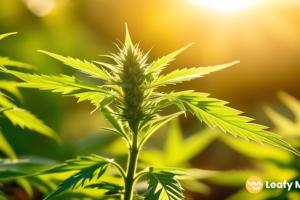
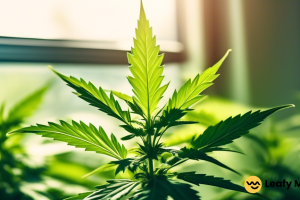





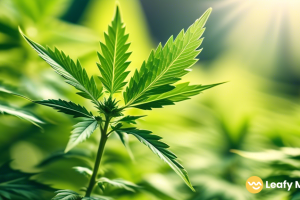
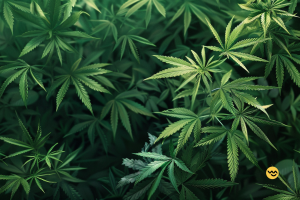
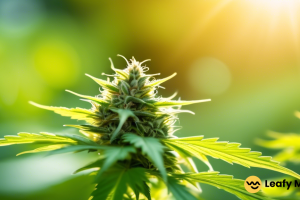
Leave a Reply